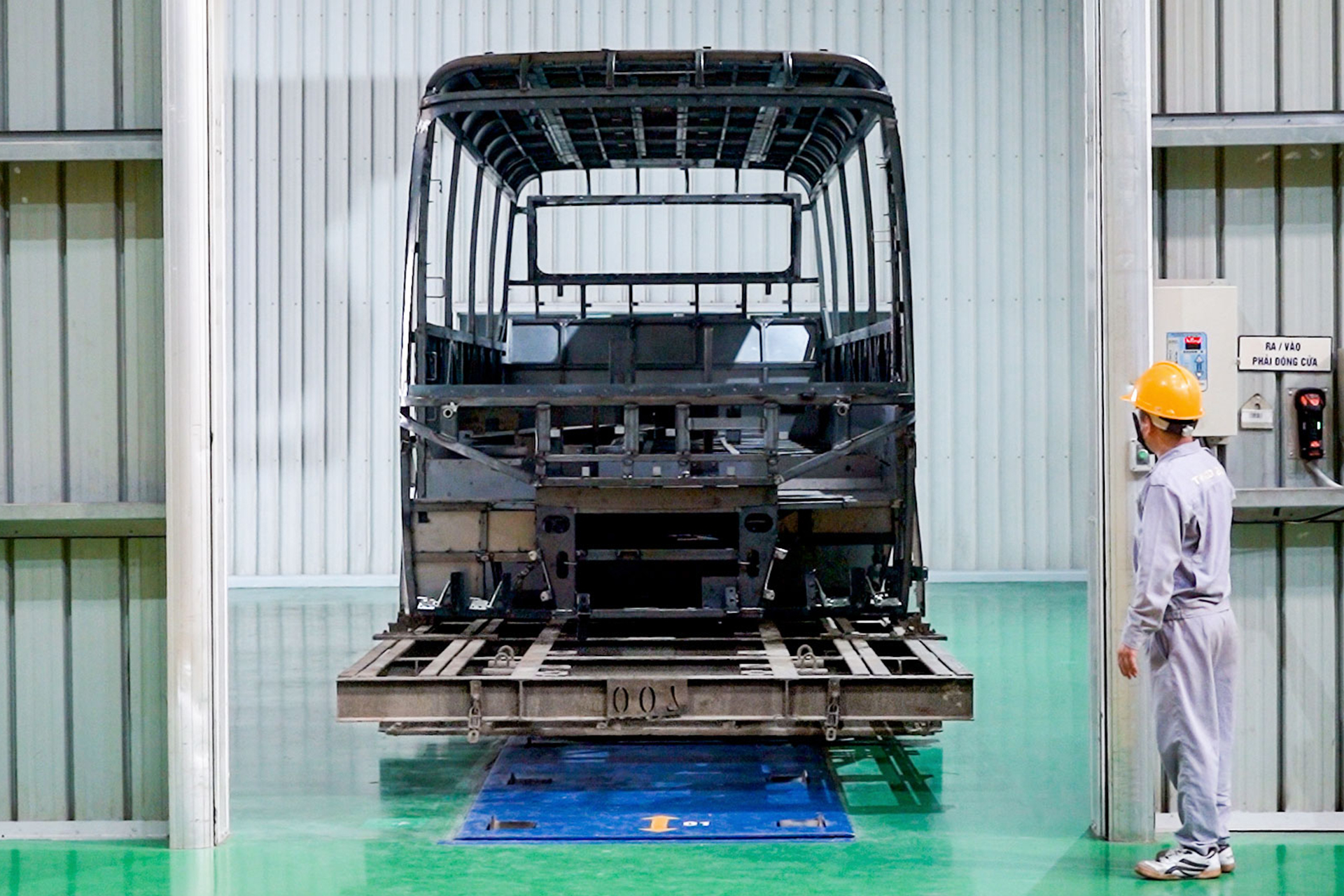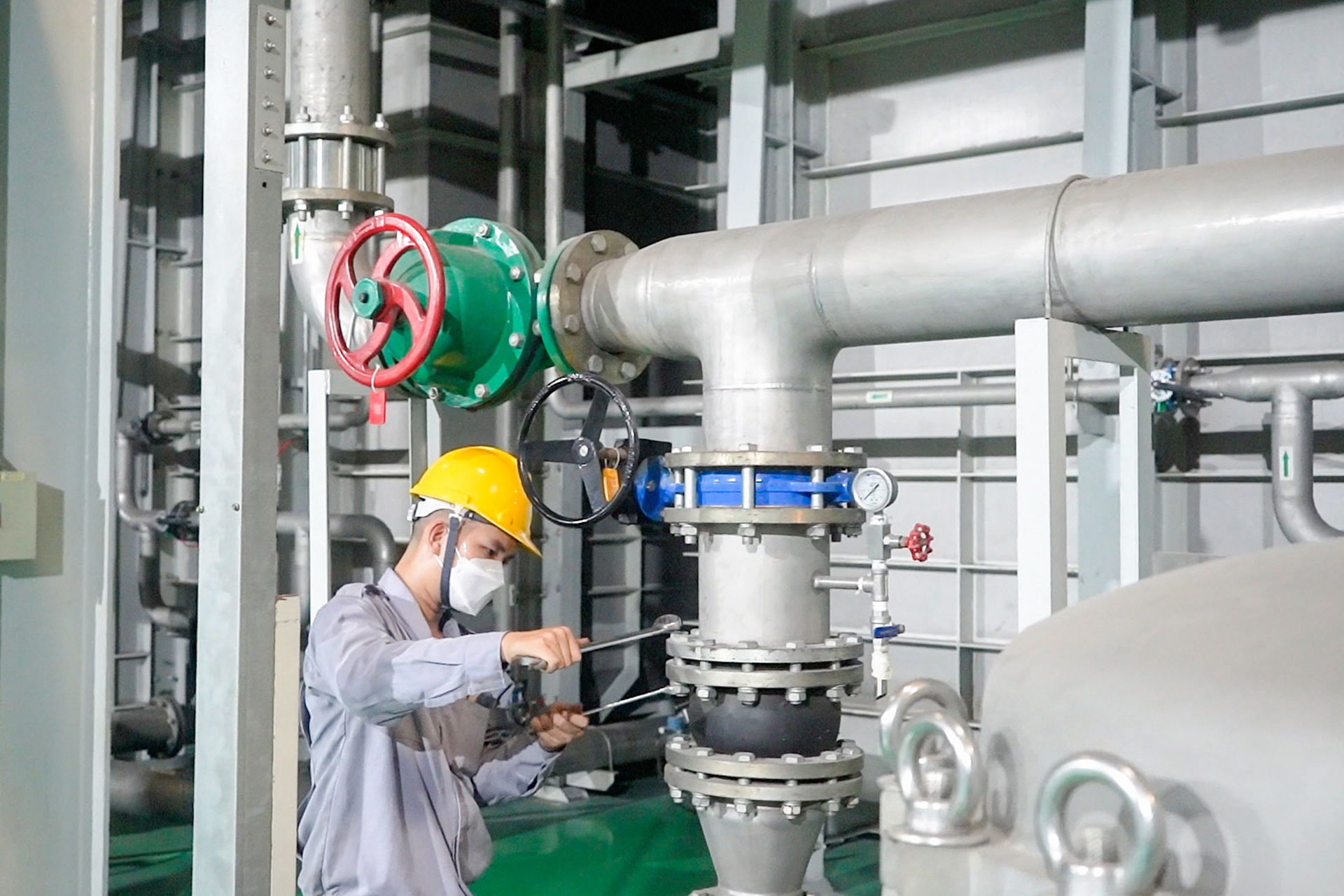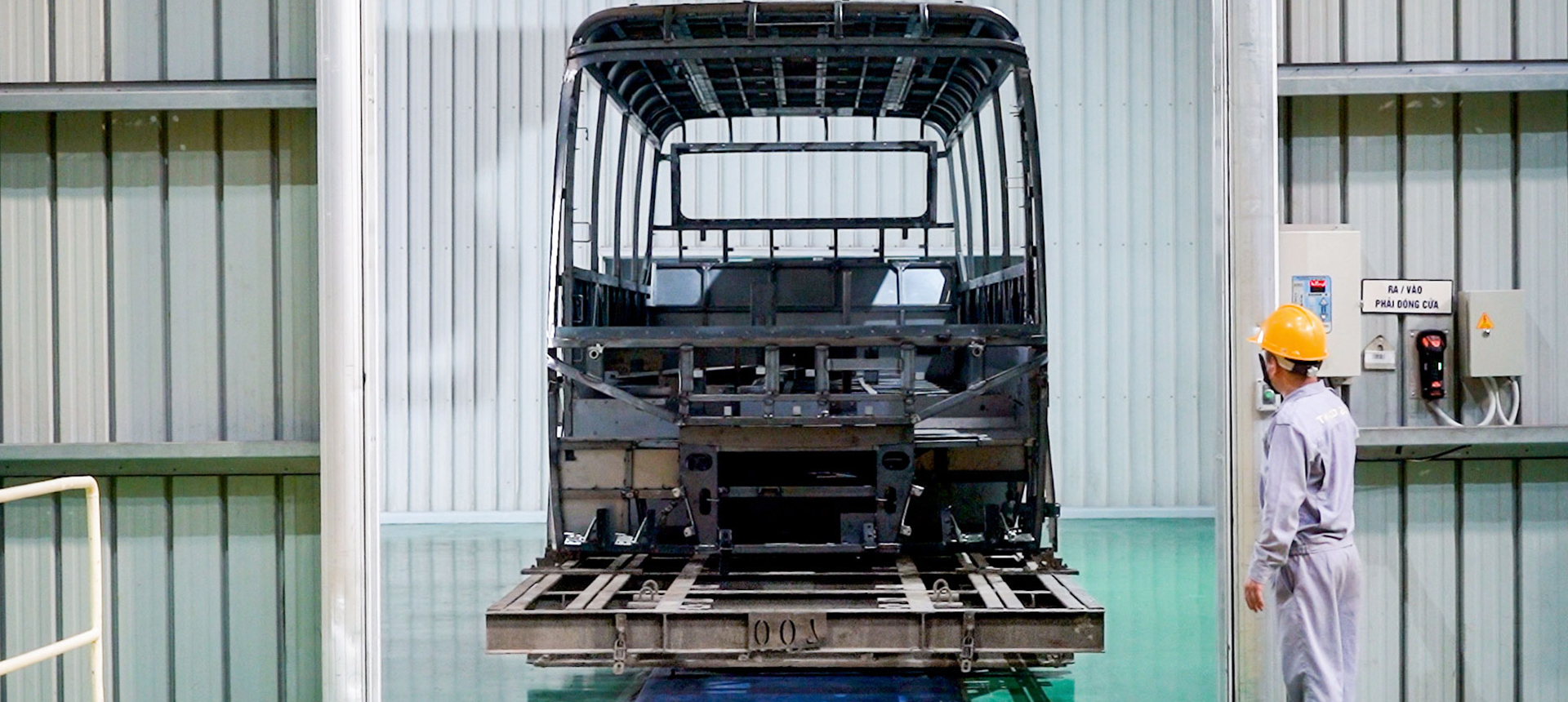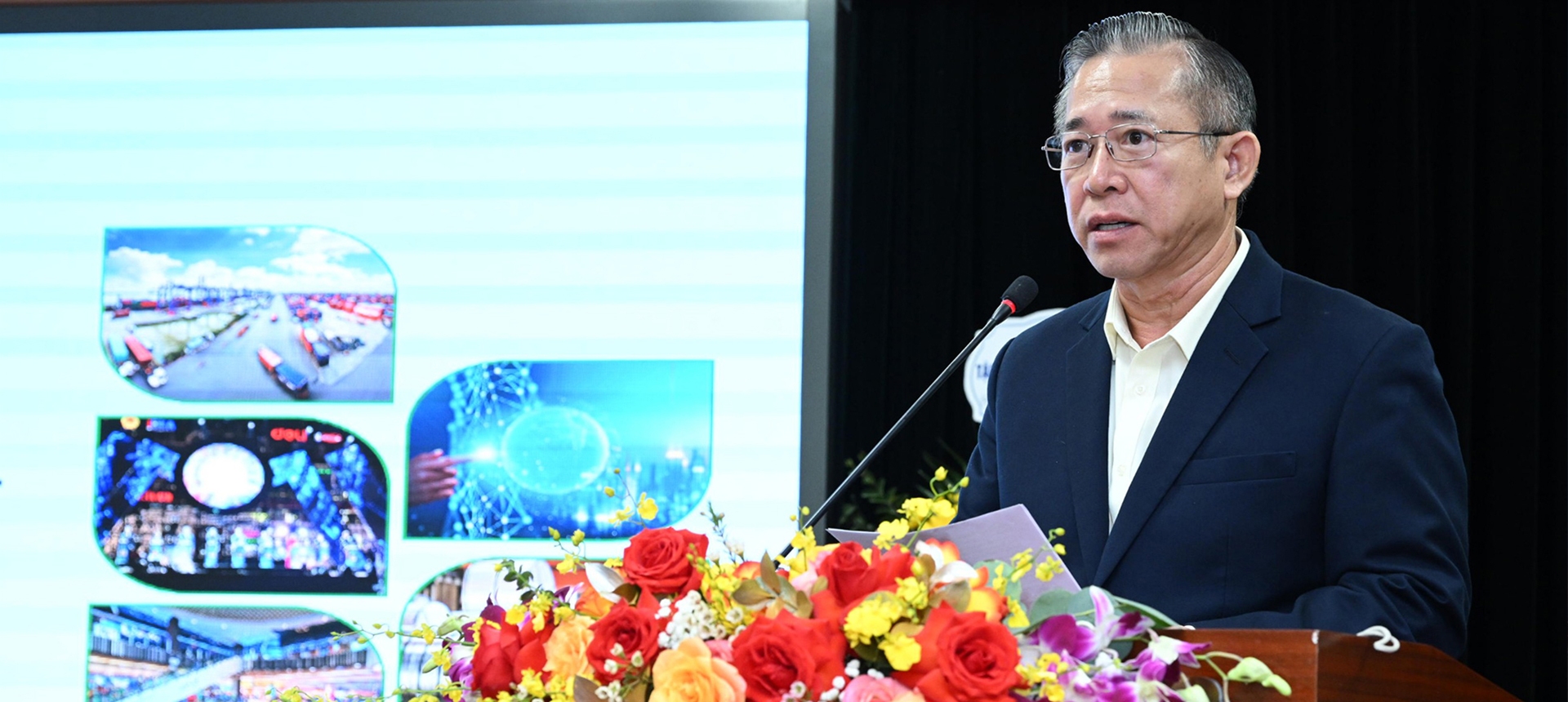THACO Bus Plant effectively applies SCADA system to digitize production management
THACO Bus Plant is revving up its production management with technological solutions and the Supervisory Control and Data Acquisition (SCADA) system, which enables connecting seamlessly with equipment across the entire production chain – from the welding lines to the painting booths and assembly stations, all the way to the final quality inspection.

The SCADA system is designed to suit the size and technical complexity at the factory, providing outstanding functions: keeping tabs on every car body, monitoring each machine and equipment, thereby providing warnings for timely maintenance.
Specifically, the system is integrated with features from radio frequency identification (RFID) technology, tracking the number and position of car bodies real-time at each workshop, pinpointing their location and logging entry/exit times at every station.

A technician is maintaining the machine based on warnings from the SCADA system.
With the ability to remotely monitor and collect synchronous data, the SCADA system keeps a constant pulse on each machine and equipment at the lines. In particular, the system automatically updates every aspect of the paint line, from chemical concentration, water level, oil filtration system in ED tanks, paint supply system... Based on the collected data, the system can control technical standards and paint surface quality according to the requirements of THACO and other international car brands. The system also provides an appropriate maintenance plan based on the collected data of the machinery, reduces downtime due to equipment errors, and optimizes the production process.

Applying the SCADA system is an important solution to help THACO Bus Plant improve production management efficiency by using centralized management, smooth and flexible coordination of machinery, equipment, resources, and product information. In the coming time, the factory is committed to upgrading the SCADA system, embracing further digital transformation, meeting the production strategy to serve both domestic and export markets.








